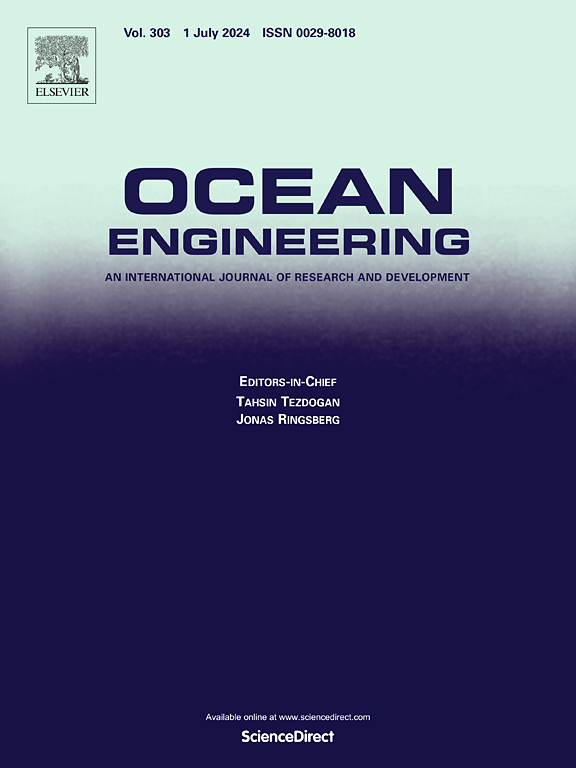Experimental study on the combined effect of hydrogen storage tanks and ventilation grilles on the deflagration mechanism in hydrogen-powered ships
IF 4.6
2区 工程技术
Q1 ENGINEERING, CIVIL
引用次数: 0
Abstract
To explore the coupled effects of ventilation grille openings and hydrogen storage tank arrangements on the consequences of premixed hydrogen deflagration accidents, a semi-open 300 × 300 × 900 mm deflagration visualization platform was constructed. Experiments were conducted under varying conditions of hydrogen equivalence ratio, storage tank arrangement, obstacle-ignition distance, and grille opening angle. The experimental conclusions are as follows: when only with the grilles, Helmholtz oscillations occurred at a 0.3 equivalence ratio, while increasing the grille opening angle reduced internal peak overpressure (Pint) at 0.4 and 0.5 equivalence ratios. As the equivalence ratio increases, high-frequency oscillation duration shortens. Only with hydrogen storage unit obstacles, the deflagration venting peak overpressure (Pout) and three external peak overpressures (Pext1, Pext2, and Pext3) appear. Additionally, the flame propagation speed significantly increases. However, higher equivalence ratios, obstacle volume blockage ratios, and obstacle-ignition distance causes Pext2 to disappear. Additionally, increasing the obstacle-ignition distance causes Pout to rise initially and then fall. With both obstacles and grilles, Pint occurs at a 0° opening angle, while Pout decreases as grille opening angles increase (15°, 30°, and 45°). The results suggest that loosely arranging hydrogen storage tanks and maximizing the grilles opening angle can effectively reduce hydrogen deflagration consequences in the storage cabin.
求助全文
约1分钟内获得全文
求助全文
来源期刊

Ocean Engineering
工程技术-工程:大洋
CiteScore
7.30
自引率
34.00%
发文量
2379
审稿时长
8.1 months
期刊介绍:
Ocean Engineering provides a medium for the publication of original research and development work in the field of ocean engineering. Ocean Engineering seeks papers in the following topics.
 求助内容:
求助内容: 应助结果提醒方式:
应助结果提醒方式:


